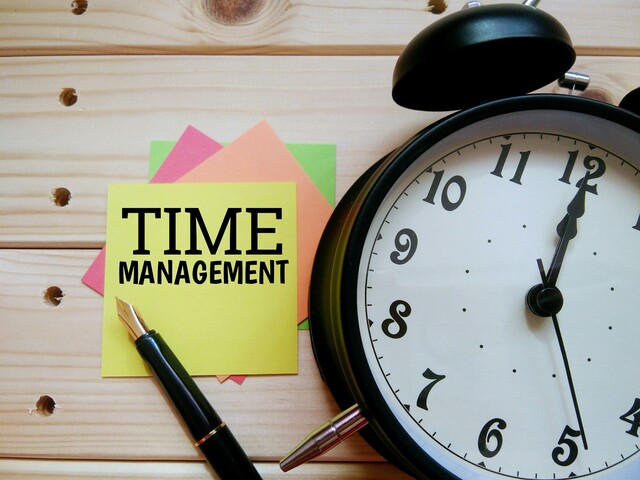The purpose of outreach marketing is to expand your business and lead base, retain your current customers, and network with other businesses. This does not mean that you should not advertise, but the goal is to cut or decrease advertising expenses because outreach works so well. However, it is still necessary to use a bit of the green to see the green in return.
Along with traditional advertising, you can use promotional items. Promotional items should have shelf life, meaning they will last. Perhaps you want to give away mouse pads or T-shirts with your company logo. It is not always wise to use things such as notepads and pens because the shelf life is short; pens lose ink and notepads get used quickly. For the appropriate venue, such as a school, then yes; notepads, pencils, and pens with your logo are a perfect item. That is the other element of the equation: If you are purchasing promotional items for a specific event, be sure they fit and make sense.
There are several sources in which you can advertise. Choosing one depends on your type of products and services and your target audience.
- Radio: This type of advertising is sold on the basis of time. That time can vary from an entire program, which includes your commercial announcements, to spot announcements ranging from 10 to 60 seconds. Price ranges are higher during drive time, the hours in the morning and evening when the maximum number of people are in their cars going to or from work, school, or other daytime activities, and lower during the time when more people are watching television. Most stations offer package rate plans with a specified number of commercials guaranteed within a particular time slot.
- Newspaper: These ads are still somewhat of a staple in advertising. You will pay for ad space based on column inches, ad size, whether it is color, and what day of the week the ad runs. Typically, Sunday is the day that everyone seems to want the paper because of the advertising circulars, so this is a prime day to have an advertisement in the paper and also the most expensive. If you feel a newspaper ad is necessary to advertise your business, work with a local marketing firm or ad agency to create a nice standard ad for you that you can repeatedly use for various sources.
- Telephone book yellow pages: The good old yellow pages in a print or online telephone directory still prove to be a chosen source for finding business listings. You should at minimum run a basic listing, and if you want to place an ad, then you should choose a color ad or a larger ad. These are the ones that get noticed.
- Direct mail: This type of advertising is a way to consistently get your target audience's attention. However, these ads can become quite pricey, mostly because in a direct mail campaign, you cannot just send one mailer and expect to receive results. Direct mailers usually are timed and sent in a series.
- Online sources, including search engines: Online sources can vary a great deal. Flyers and blogs are a great place to start because they are free. Search engines also can be a great spot. If your company sells the newest and best ear thermometer called "TheTherMOMeter," you can pay to have your product's Web site show up first or within the first page of a search engine's search. Most consumers will only look at the first page of search engine results and then move along. Depending on your type of products and services, you may want to look into having prime space on these sites.
- YouTube: YouTube has become a worldwide phenomenon. You can upload your own videos, thus making this a perfect venue to do your own video advertisements. You can e-mail links to clients, and even put the videos on your Web page or blog.
- Magazines: These ads are very targeted because there are literally thousands of magazine titles out there. Depending on your audience, you will have to choose the publication that will truly reach out to your target market. Magazine advertising is pricey. A full-page color ad, depending on the publication, can run anywhere from $5,000 to $25,000. If you own a small to medium-sized firm, a local magazine may be ideal for you. If you want national exposure in a larger magazine, just be prepared to pay the price.
- Marketing materials: All businesses, small and large, should employ a marketing firm to create a nice advertising and marketing package. This package typically includes collateral pieces, such as brochures, inserts that tell about your company, letterhead to print official correspondence on, standard letter-sized envelopes, and thank-you cards and envelopes. Your brochures always will be needed for outreach efforts and mailings. The same is true with thank-you cards. The first time after you meet with a prospective client, mail a card expressing thanks.
- Promotional items: These are a great way to advertise your company. Even after you have left an event or meeting with a client, the item keeps on advertising for you. Promotional items have your company's logo on them. You can put a logo on anything. See the items below:
KEY TERMS
1. Expenses: business costs, including expenditures for advertising and marketing.
2. Radio advertising: advertisements broadcast over the radio that range from seconds to minutes in air time.
3. Newspaper advertising: print advertisements in local newspapers.
4. Yellow pages advertising: advertising in a classified telephone directory or section of a directory, usually printed on yellow paper, that lists subscribers by the type of business or service they offer.
5. Online sources: advertisements on Web sites.
6. YouTube: a video-sharing Web site where users can upload, view, and share video clips.
7. Magazine ad: advertisement in a periodical containing a collection of articles, stories, pictures, or other features.
8. Marketing materials: collateral items used for marketing and office relations, such as letterhead, brochures, envelopes, and thank-you cards.
9. Promotional items: giveaway items with your company logo for use as a marketing tool at events.
Tracking Customer Demographics and Marketing Successes
Now that you are prepared to do outreach, or even have been doing it for a while, how will you know it works? First and foremost, when you have a steady flow of business or even a sudden increase, it is working. But if you really want to pinpoint where your leads are coming from, Microsoft Excel or other similar database programs are helpful for tracking your leads on a regular basis. Additionally, if you advertise via radio or online sources, there should be reports available to you that track this data.
Perhaps you want to track a specific time of month when you are running a promotion of some sort. Perhaps you simply want to know if people are reading your blogs, looking at your Vflyers, or even visiting your Web site. Whatever the case may be, reporting on the success of your outreach and other marketing efforts will assist you in deciding what works and what does not. This is not just for purposes of knowing what works but also for budgeting reasons. You do not want to continually buy a booth at the local trade show in the fall if you receive little or no response.
The key factor of tracking leads and marketing successes is through customer demographics. Demographical information is everything you want to know about a customer, from his or her address to birthday. You should always have customers fill out a guest card with pertinent information. Many salons and other businesses have customers fill out a form that they keep on file that tells all about them, and most importantly how they heard about their business. That is really key: finding out how someone heard about you. If it is a referral, then great; you know that your current referral system is working and more importantly that you actually receive referrals. If your business does not have a software program that you use to run your daily business, then you can input customer information in a simple database that suits your needs.
SAMPLE GUEST CARD (SIMPLE FORM)
|
Name: Susan Demko Date: September 1, 2009 |
|
Address: 555 W. 1st Ave. Chicago, IL 11111 Phone: 555-1200 |
|
What brought you here today? I need new kitchen flooring. |
|
How did you hear about us? From Lilly Smith |
If your type of business requires you to get more personal information or even run credit checks, of course, you may have software to handle this for you and track the information. Even if you own some other kind of business, you can input basic information fairly easily and maintain it in a database that works just as well.
Businesses may also inquire about people in your household so that you can bring in your son or daughter for a discounted haircut, etc. The more information collected about customers or prospective customers, the better. It not only will help you get to know them, but you will be able to provide exceptional customer service for their next visit.
For example, if Ms. Allen comes into your salon for a massage, you pull up her electronic or hard-copy guest card, and you note that she had a fall prior to her last visit. This allows you to strike up a conversation, ask her how she has been since then, and if there was anything she may need today. That kind of service makes customers melt. It is not just the "wow" factor of "Gosh, you remembered that," or that you took notice of their circumstances, but it is the mere fact that you took the time to ask. If you are genuine in your approach, people will pick up on that.
Now let us get back to tracking your marketing and advertising successes. One great way to track these is for your advertisements to have either a coupon in them or an invitation, such as "Bring in this ad for your free gift!" or "Bring this ad in for 50 percent off of your next service." This is a hands-on way to track those print advertisements and determine if you want to keep doing them or change them.
Also keep in mind when doing print advertisements, especially in newspapers, that there are zones. So you may want the package that advertises in your town, but you may also want to reach the market that is 50 miles outside of your town. Verify with newspaper and publication representatives where the ad will circulate so that your exposure is optimized. The same goes for radio advertisements: There are zoned times of day, etc., in which certain types of listeners are tuning in. The working mother that you are trying to target will not be tuning in during the work day, but she will be on her drive home from work.
If the source that you advertise with, such as VFLYER, provides reports and traffic sources, just be sure to log on consistently and check these reports for success information. Marketing and advertising success is measured in two ways: people that look at your advertisements, people that bring them into your place of business to utilize a coupon or other special offer, and people that say they were referred by a friend or family member.
Once you get the gist of where most of your customers come from, then you can weed out the sources that are not worth your while. Sometimes within the first month or so, you may be able to assess whether or not you want to keep advertisements with a particular source. The same goes for your outreach marketing; if you simply are not getting anywhere with specific events or sources, move on to something else.
The last component of tracking your marketing and advertising success is your cost per lead (CPL).This is where you analyze monthly or quarterly how much you spent on an advertising source, how many leads you received from it, and how many leads converted into actual business in the form of services or products purchased.
Example:
The Times Newspaper (full color ad) $3,000 for 12 weeks; Total Leads: 60; Total Lead Conversions: 45.
KEY TERMS
1. Demographic information: the characteristics of human populations and population segments, especially when used to identify consumer markets.
2. Guest card: an informational tool used to acquire demographical information on customers.
3. Database: a comprehensive collection of related data organized for convenient access, generally in a computer.
4. Microsoft Excel: a spreadsheet program from Microsoft, part of the Microsoft Office suite of productivity tools for Microsoft Windows and Macintosh. Excel is probably the most widely used spreadsheet in the world.
5. Cost per lead: the cost per lead based on your advertising/marketing cost divided by the number of leads.
6. Conversion ratio: the percentage of leads/prospects that turns into customers.
























